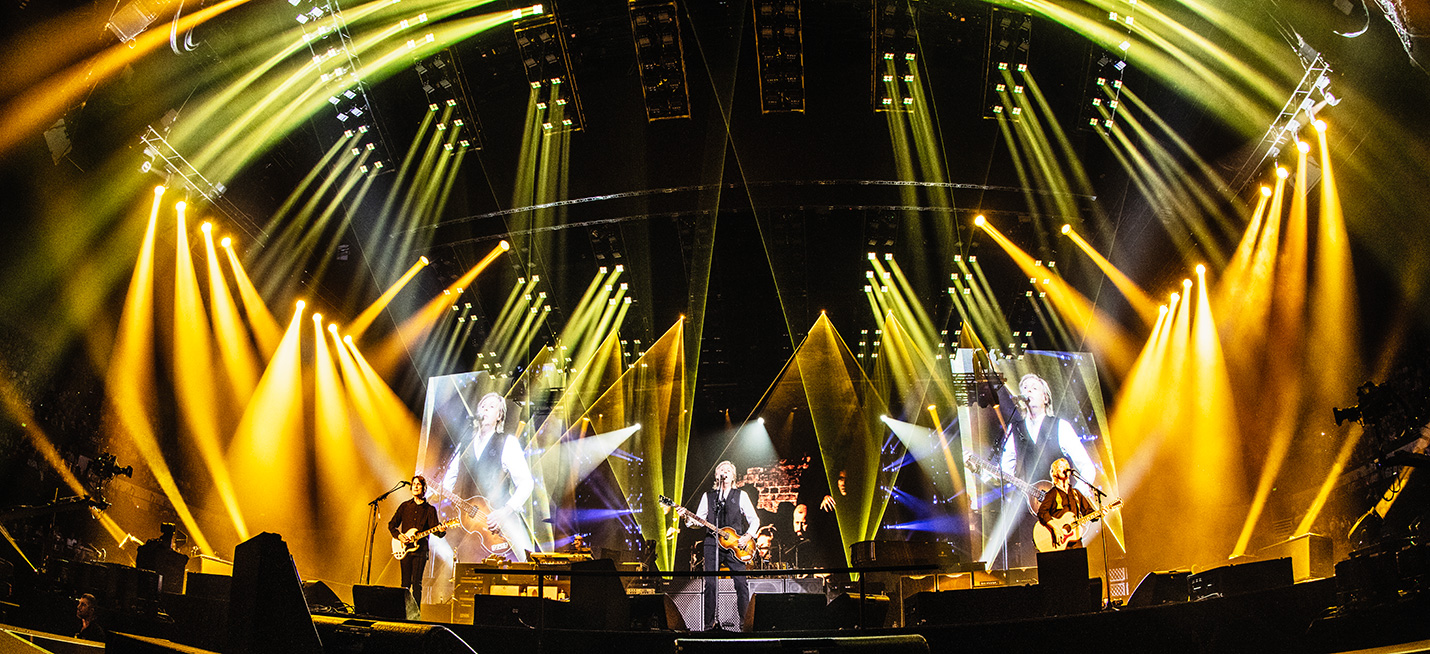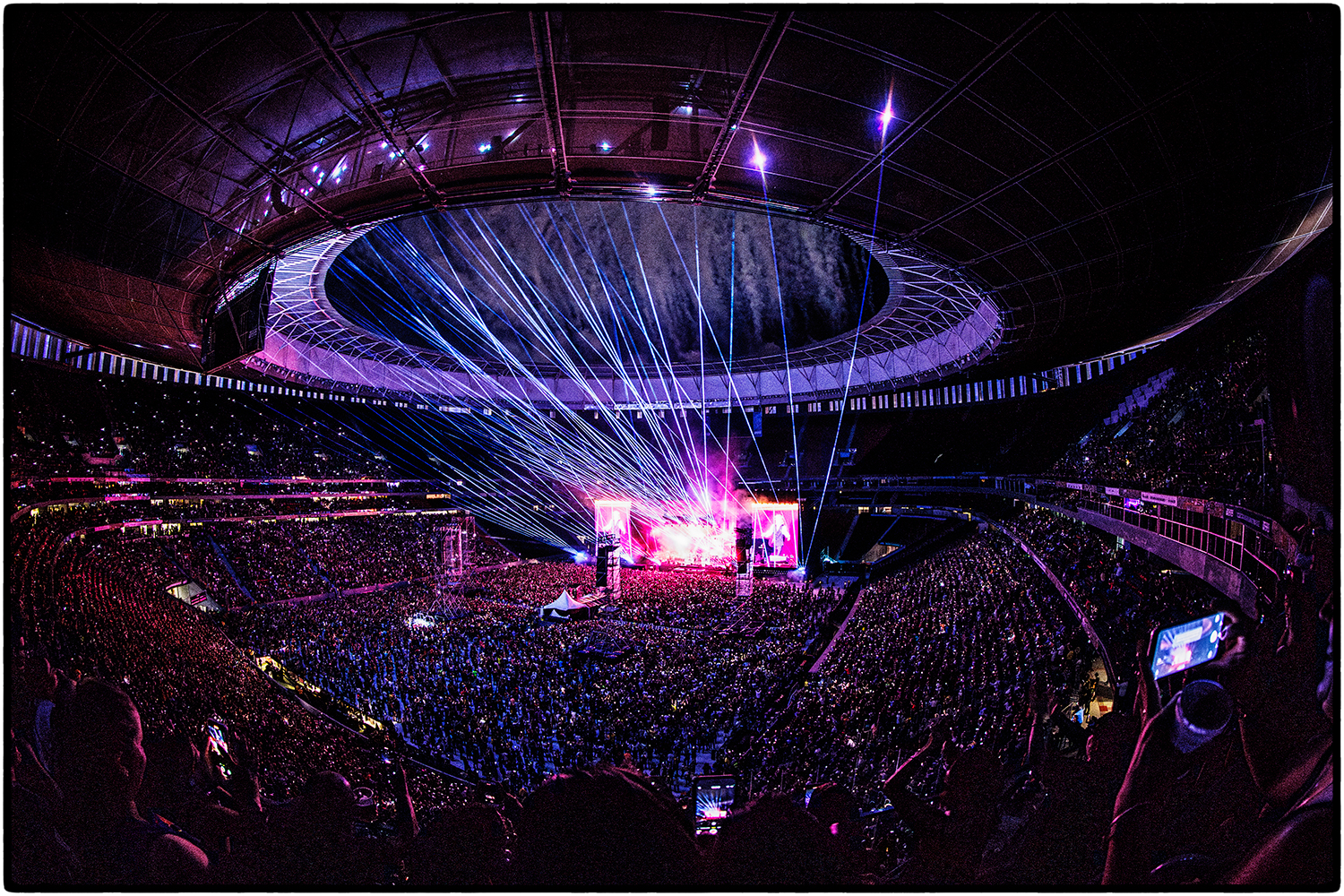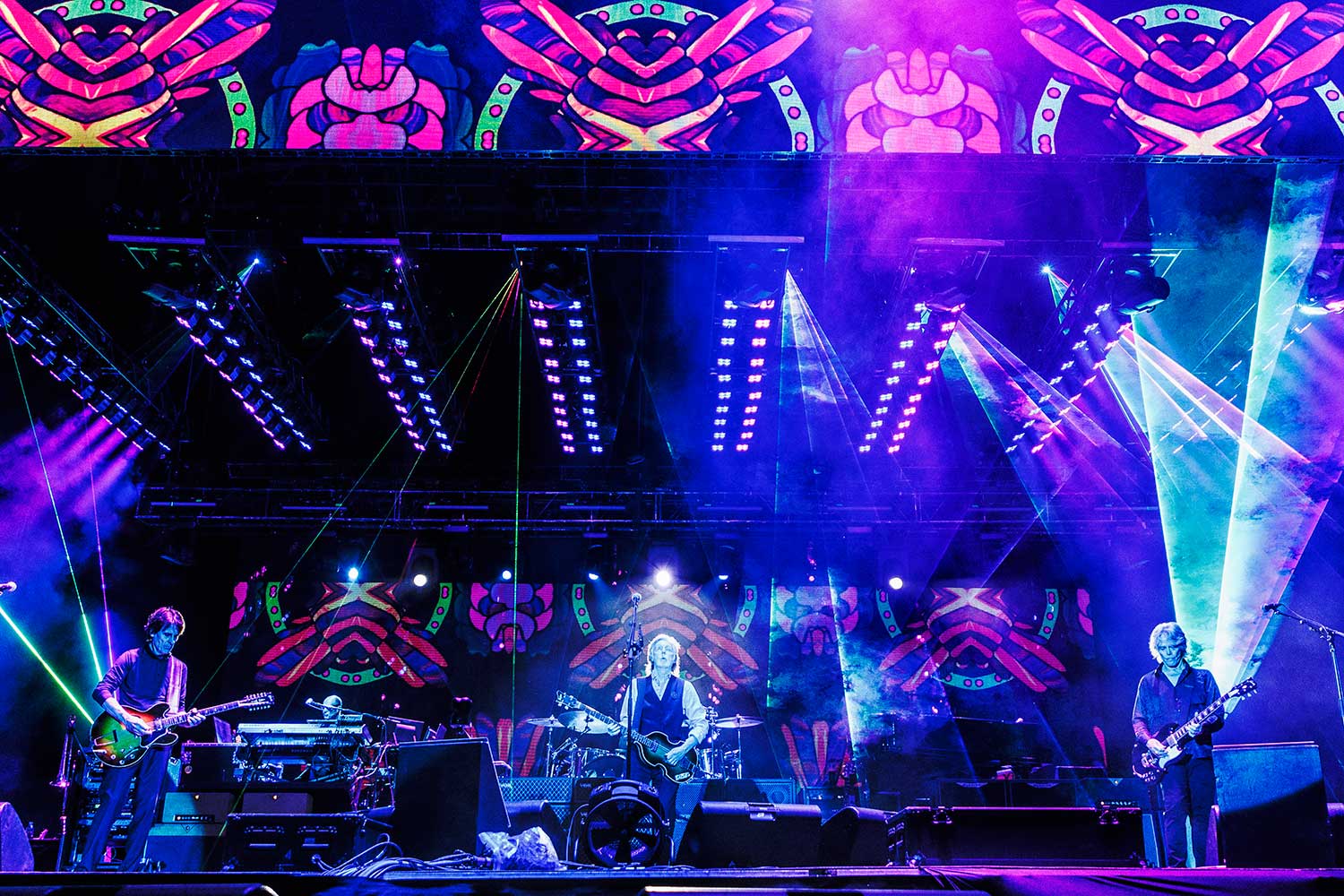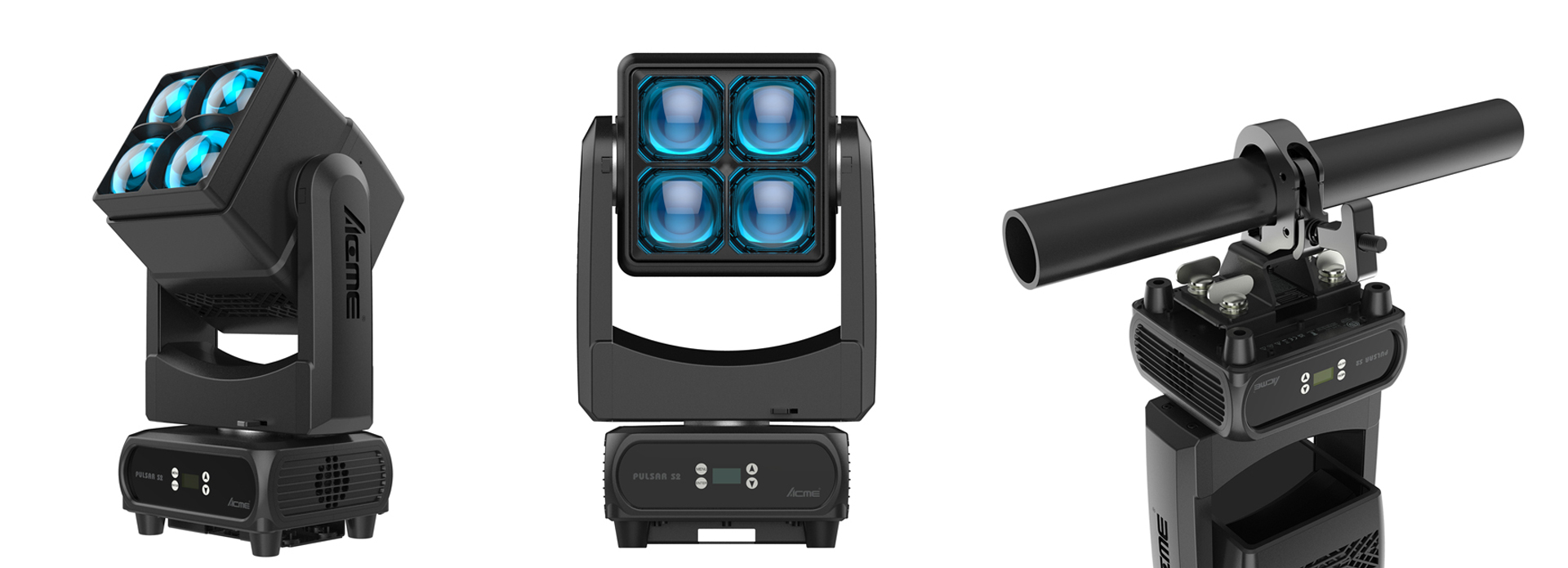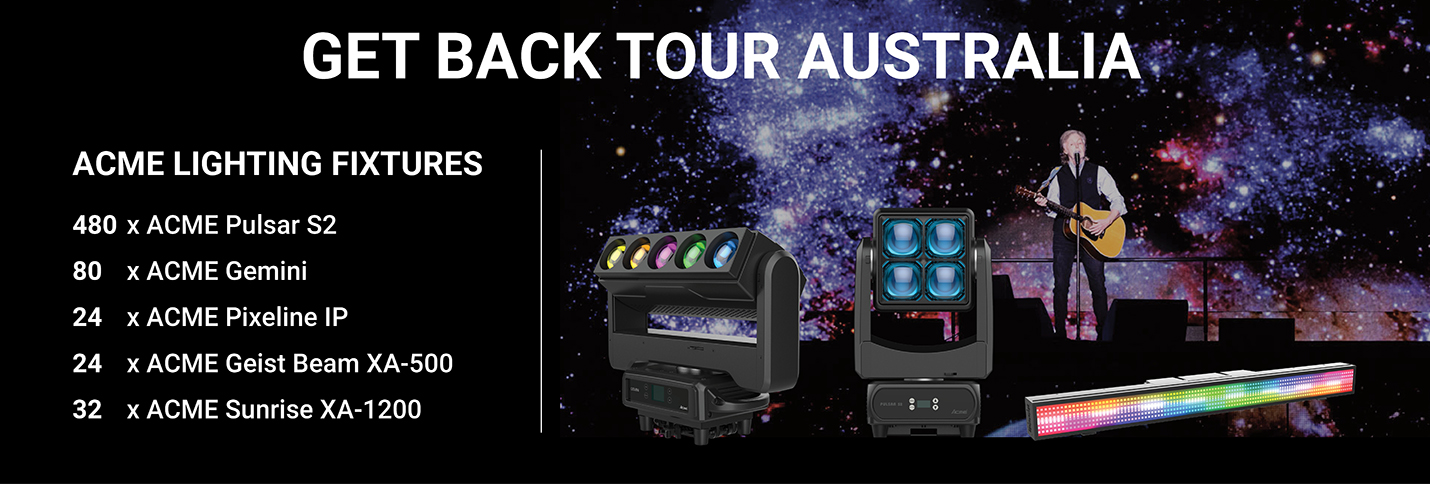Written by: Artemis Horton for CX Magazine – Issue 199
Everyone’s had that “wow” moment. A dazzling set piece, a single heartfelt song, spectacular lighting effects, or the whole entire show – anyone who has ever experienced live entertainment has had at least one of these moments, no matter what side of the stage you were on.
My first was the weirdest and probably most memorable – no live performer, no stage lights, but it stuck with me: Toronto, Canada, 1980-something. The planetarium had just installed a brand new 16-speaker surround sound system and a 4-metre long, state-of-the-art electromechanical Zeiss-Jean Planetarium Projector Type 23/6. Now showing was Laser Floyd: Dark Side of the Moon. One night, mum packed us up and drove the two hours to the city to see it. I was only a handful of years old, totally new to technology, scared of the dark and probably the only person there with their mother and completely stone sober.
As the room lights dimmed, I felt a zing of excitement. Heartbeat…clock ticking…cash register…voices…helicopter…the cacophonous intro of Speak To Me was creeping out of the surround sound system, taunting mefrom every direction. Suddenly, the monster projector rose to life in the centre of the room like a giant robotic space-ant. I was terrified – but in a thrilling kind of way. Breathe. Yes, suddenly I could. Images began scribbling across the domed ceiling and they were mesmerising. I knew the music so well, I had been in this theatre before, but I had never experienced either the way I did that night. Visually. Physically. Emotionally. I was blown away.
Only recently, Australian audiences got their chance to be blown away by a spectacular production while witnessing an original Beatle play The Beatles. Paul McCartney’s ‘Got Back’ tour, according to the Herald Sun, “…combines epic and influential pop and rock, and stateof- the art production with every trick, treat, bell, whistle and sky rocket.” McCartney’s music – from The Beatles, to Wings, to his solo work – now spans across three generations of music-loving concert goers who all got to feel that moment together.
Social media feeds were jammed with resonating moments – experiences needing to be captured or shared with friends and family who couldn’t be there each night of the performance. Audience members smiling, hugging, swaying and singing. Snippets of the powerful horn section visible on the LED screens, lasers darting across the audience, an impressive array of lights sweeping across the stage and stadium, pyrotechnics and even some calm and simply beautiful moments featuring close-ups of Paul on the screens, his expression in song drawing each person into their own private moment with the artist. It was all very well-crafted and visually beautiful. What you were hearing seemed intrinsically connected with what was happening on stage around the music. And not just in a technically precise timecode sort of way. It just…fit.
Compressing 60 years’ worth of music into a three hour performance takes more than stamina and decisive song selecting. From a production design perspective, sensitivity to each genre and the era it represents has to be taken into account. Multi-award winning live concert production, set and lighting designer LeRoy Bennett describes it in context: “The Beatles explored and experimented with all genres and created timeless music…Paul has written songs that have a lot of emotion and soul. His music is thought provoking and melodically so memorable. My job is to represent artists, who they are and the story they are telling. Paul’s music is so diverse, I have to portray a musical history in an emotional, visual way.” Listing the artist as one of his favourites, it’s not surprising that Bennett has been Paul McCartney’s production and lighting designer for
22 years, and the only artist he actually tours with.
But Bennett’s accolades extend far beyond the ‘Got Back’ tour, or even the 22 years prior.
At the same time laser light shows were expanding this kid’s brain to accept live entertainment as more than a musician performing with a few bright lights illuminating them, a talented lighting technician was gaining some proper traction in the live entertainment industry. Some might say it was simply a matter of being in the right place at the right time that would score LeRoy Bennett the role as Prince’s production and lighting designer for the next 14 years, but this was at a point in recent history when LinkedIn didn’t exist. Spraying your Insta feed with ultra-filtered, hash-tagged highlights and reels of your latest trade tricksweren’t a thing. What you saw was what you got. Fortunately, someone saw what Bennett truly had, and would continue to deliver to audiences of the likes of Prince, Scorpions, Janet Jackson, David Bowie, Nine Inch Nails, Lady Gaga and of course, Sir Paul McCartney (to name only a select few). A rather impressive resume for the artist who has become one of live entertainment’s most sought-after designers for the past 40 years and counting.
” LeRoy Bennett claims he ‘designs concert tours’ for a living.
I think he actually designs ‘WOW’ moments.”
Touring presents its set of challenges, and one that is often considered from the onset of production design is what can be taken on the tour and what will have to be substituted at destination. Early in Bennett’s career, touring and live production were still a wild frontier. He has had the fortune of witnessing and getting involved in that evolution. An artist can only express a visual to the level which the available technology will let them -so, in order to fix this ‘problem’, be a part of the solution.
“I like what tech can do for me, but I don’t want to be aware of it,” admits Bennett. “You have to give tech a human touch at times… balance an analogue feel in a digital world.” Fortunately, the possibilities are limitless in today’s technological landscape, so when ACME Lighting consulted LeRoy Bennett for the design of the new ACME Pulsar S2, it was a matter of designing something that could help transpose the ideas from the creative brain to a stage setting, with flexibility and compatibility being the key focus.
“ACME are enthusiastic about development. They actually manufactured a lot of lights for other companies before they developed their own, resulting in reliable products and the capability to churn out quality product quite quickly which keep up with Western style of lights. They have the advantage of manufacturing in China, with the aesthetic and attention to detail typical of a Taiwanese manufacturing company. The mega plus is their price point on these fixtures, and their service is great.” Bennett’s appreciation for the ACME badge, quality and value is reinforced by the critical role their Pulsar S2s and Geminis in particular play in the production design.
The Australian leg of the ‘Got Back’ tour implements the same lighting design as the 2022 North American tour did, but all lighting fixtures except for the ACME Geminis, Pulsars and follow spots, were swapped out. Notably, there were 480 ACME Pulsar S2 multi-capable fixtures in the rig, supplied out of the USA
and supported locally by Australian ACME distributor ULA Group.
The Pulsar S2 is a moving light featuring dual-head design with powerful LED engines on the front and back of the fixture to produce extraordinary effects. The front of the fixture features 4 x 60W RGBW LEDs that generate powerful beams and rich colour. The Pulsar S2 features a zoom range of 2.5 to 28º, and precise individual pixel control, allowing for endless combinations of effects. Nine individual controllable 10W cool light LEDS are added to craft sharp 3.5º narrow beam angles.
The back of the fixtures head is equally distinctive with 24 zones comprised of 96 cool white LEDs, and nine zones with 10 RGB LEDs, creating eye-catching transitions and dynamic strobe effects in a wide 100º angle.
High-resolution electronic dimming 0 to 100% and smooth linear focus control allows for seamless transitions between sharp and soft themes.
The Pulsar S2 also boasts infinite pan and tilt capability, ensuring broad coverage, as well as its beautifully compact size and weight of only 11kg, allowing it to be installed virtually
anywhere. It’s their incredible versatility and compact form factor – allowing them to be packed close together – which appealed to Bennett enough to employ a cool 480 of them for the ‘Got Back’ set.
Three grandMA3s – two running the show and one with the front-of-house tech to reset lights – are employed. An additional grandMA3 compact console controls the video component across the LED screens.
As technology advances and compacts, describing the hardware involved to orchestrate such a large-scale production seems so disproportionate, but the power and the quality of the equipment technicians have access to in this day and age leaves the door open for infinite creative possibilities. Unfortunately for LeRoy Bennett and his team, they only had one 747 to pack all their creative tools in to, but they still managed to produce a show which added a new dimension to the music of Paul McCartney.
Audio Visual Imagineering, the designers responsible for the laser light show phenomenon of the 1980s, claimed they wanted to “create a musical experience” where the audience would be so immersed, “…they wouldn’t know if they are seeing or hearing the music” (New York Times, c.1985). “A lot of times I think people hear music, but they don’t understand why they enjoy it,” Bennett imparts, highlighting his tactic of “evoking the emotion of music in a visual way.” Everyone came to the Paul McCartney concert, knowing all the songs. No one had ever seen or felt them like that before. LeRoy Bennett claims he “designs concert tours” for a living.” I think he actually designs “WOW” moments.
” …an impressive array of lights sweeping across the stage and stadium, pyrotechnics and even some calm and simply beautiful moments of Paul on the screens, giving each person their own private moment with the artist.”

